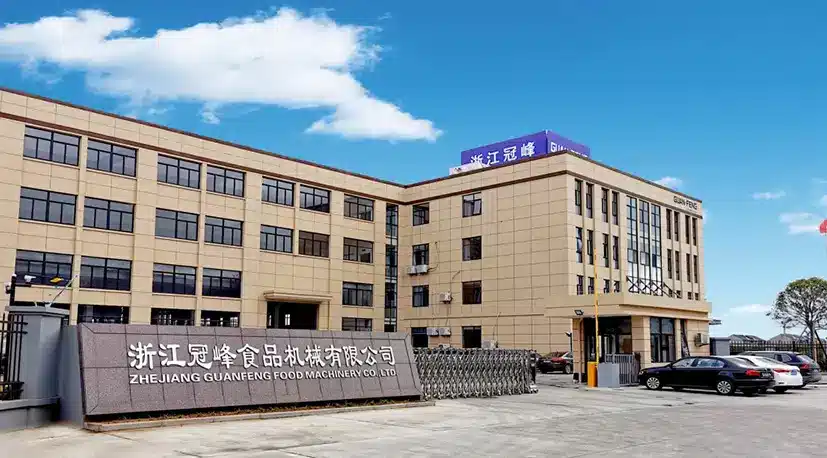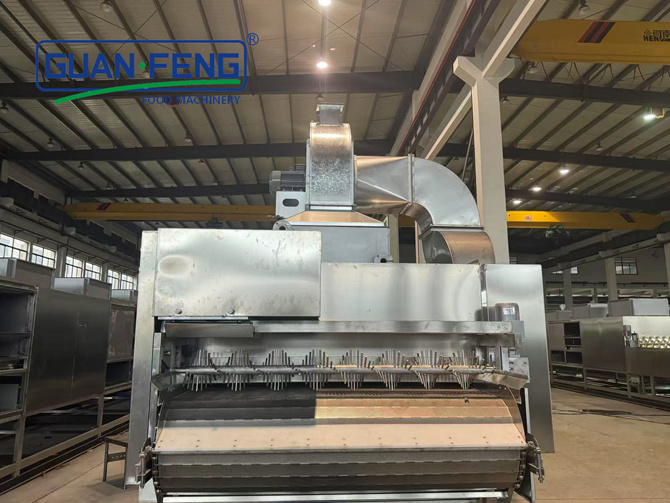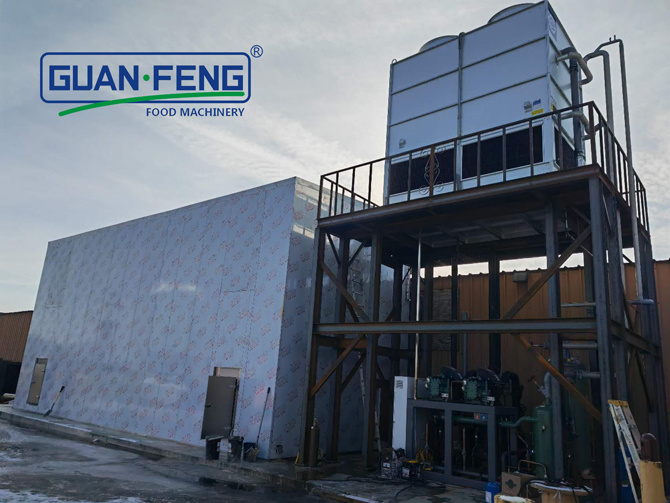BLOG
Focus on hot topics, real-time dynamics
The Science Behind Vacuum Freeze Dryers: A Deep Dive into Vegetable Drying
The Science Behind Vacuum Freeze Dryers: A Deep Dive into Vegetable Drying
Table of Contents
- 1. Introduction to Vacuum Freeze Dryers
- 2. What is Freeze Drying?
- 3. How Vacuum Freeze Dryers Work
- 4. Benefits of Vacuum Freeze Drying for Vegetables
- 5. Applications of Freeze-Dried Vegetables
- 6. Comparison with Other Drying Methods
- 7. The Future of Vacuum Freeze Drying Technology
- 8. Frequently Asked Questions
- 9. Conclusion
1. Introduction to Vacuum Freeze Dryers
Vacuum freeze dryers, also known as lyophilizers, are an essential piece of equipment in the field of food preservation. Their unique capability to remove moisture from food while maintaining its structure, flavor, and nutritional value makes them invaluable, especially in the realm of vegetable drying. As the demand for convenient and long-lasting food options increases, understanding the science behind these machines becomes crucial.
2. What is Freeze Drying?
Freeze drying is a preservation technique that involves the removal of moisture from food materials, allowing them to have an extended shelf life. This process takes place in three primary stages:
2.1 Freezing
The first step involves rapidly freezing the vegetable. This essential stage is critical as it helps to form ice crystals within the cellular structure, preventing the breakdown of cell walls. A proper freeze ensures that the integrity and quality of the vegetable are maintained.
2.2 Primary Drying (Sublimation)
In the primary drying stage, the pressure is significantly lowered in the freeze dryer while heat is applied. This process causes the ice to sublimate, meaning it transitions directly from solid to vapor without becoming liquid. This phase is where the majority of the moisture is removed.
2.3 Secondary Drying (Desorption)
The final stage is secondary drying, where any remaining moisture is removed. This process provides the final product with a very low moisture content, ensuring the longevity and stability of the freeze-dried vegetables.
3. How Vacuum Freeze Dryers Work
Understanding how vacuum freeze dryers operate can provide insights into their efficiency and effectiveness.
3.1 The Components of a Vacuum Freeze Dryer
A vacuum freeze dryer consists of several essential components, including a freezing chamber, a vacuum chamber, heating plates, and a condensing unit. Each plays a significant role in the freeze-drying process.
3.2 The Process Flow
Initially, vegetables are placed in the freezing chamber, where they are frozen rapidly. The vacuum chamber is then engaged, reducing the pressure. After this, heat is applied to the product, facilitating the sublimation process. Finally, the moisture is collected in the condenser, ensuring a dry product.
4. Benefits of Vacuum Freeze Drying for Vegetables
Vacuum freeze drying presents numerous advantages that cater to both consumers and manufacturers.
4.1 Nutritional Preservation
One of the most significant benefits is the preservation of nutrients. Freeze-dried vegetables retain up to 90% of their nutrients, significantly more than traditional drying methods.
4.2 Flavor and Color Retention
The process minimizes the degradation of flavors and colors, enabling consumers to enjoy vibrant and flavorful vegetables in their meals.
4.3 Extended Shelf Life
Freeze-dried vegetables can last for years when stored correctly, making them an excellent option for emergency food supplies and long-term storage.
4.4 Lightweight and Compact
Due to the removal of moisture, freeze-dried vegetables are significantly lighter and more compact than their fresh counterparts, making them ideal for shipping and storage.
4.5 Convenience
Preparing meals with freeze-dried vegetables is quick and easy. They can be rehydrated in minutes, providing a convenient alternative to fresh produce.
5. Applications of Freeze-Dried Vegetables
The versatility of freeze-dried vegetables allows them to be used in various sectors, including:
5.1 Food Industry
Manufacturers utilize freeze-dried vegetables in soups, sauces, and snacks, enhancing flavor and nutrition without compromising quality.
5.2 Emergency Preparedness
Freeze-dried foods are a staple in emergency supplies due to their long shelf life and ease of preparation.
5.3 Outdoor and Camping Use
Hikers and campers often rely on freeze-dried vegetables for lightweight, nutritious meal options while on the go.
5.4 Pet Food Production
Freeze-dried vegetables are increasingly being incorporated into pet foods, ensuring pets receive balanced nutrition.
6. Comparison with Other Drying Methods
When comparing vacuum freeze drying with other drying methods, several factors come into play.
6.1 Air Drying
Air drying is the most common method but can lead to significant nutrient loss and changes in flavor and color.
6.2 Dehydration
While dehydration is faster and often less expensive, it generally results in lower quality and reduced nutrient content compared to freeze drying.
6.3 Solar Drying
Solar drying relies on environmental conditions and can lead to contamination or uneven drying, making it less reliable.
7. The Future of Vacuum Freeze Drying Technology
As technology advances, the future of vacuum freeze drying appears promising. Innovations in efficiency, energy consumption, and automation are paving the way for more sustainable practices.
7.1 Eco-Friendly Practices
New methodologies are emerging that focus on reducing the environmental impact of freeze drying processes.
7.2 Enhanced Equipment
Future freeze dryer models are expected to integrate advanced technologies, offering improved drying times and better energy efficiency.
7.3 Market Expansion
The growing demand for healthy, convenient food options suggests an expanding market for freeze-dried products across various sectors.
8. Frequently Asked Questions
8.1 What types of vegetables can be freeze-dried?
Most vegetables, including carrots, peas, corn, and spinach, can be freeze-dried effectively, preserving their taste and nutrients.
8.2 How does freeze-drying impact the texture of vegetables?
The process helps retain the original texture of vegetables, making them rehydrate well when cooked.
8.3 Are freeze-dried vegetables safe to eat?
Yes, freeze-dried vegetables are safe to consume, provided they are processed and stored correctly.
8.4 How should freeze-dried vegetables be stored?
They should be kept in airtight containers, away from moisture and heat, to maintain their quality over time.
8.5 Can freeze-dried vegetables be rehydrated easily?
Yes, they can be rehydrated quickly by soaking in water or adding directly to cooking dishes.
9. Conclusion
The science behind vacuum freeze dryers reveals a remarkable method for preserving vegetables without compromising their quality. From nutritional retention to extended shelf life and convenience, the advantages are substantial. As technology continues to evolve, vacuum freeze drying will remain a critical component in the food preservation industry, catering to an increasing demand for healthy and sustainable food options. Understanding these processes not only enhances consumer knowledge but also encourages better food choices in our daily lives.
Hot Tags:
Contact Us
E-mail:
sales@syguanfeng.com
Tel:
+86 15088506234
Address:
South Industrial Park of Dongguan, Shangyu District, Shaoxing City,Zhejiang Province,China.
GUANFENG, your customization experts!
GUANFENG FOOD MACHINERY - leading supplier of integrated food processing solutions
Copyright© 2024 ZHEJIANG GUANFENG FOOD MACHINERY CO.,LTD.










